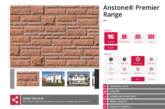
Rob Woolston, Director at multi-disciplinary design practice, rg+p, highlights the importance of undertaking comprehensive site investigations and exploring any potential constraints at the outset.
As architects, we’re often asked to provide quick, indicative layouts and designs for potential development sites without first gathering all the necessary information. This means a client’s expectations can be unrealistically raised from the start, for instance in terms of number of units or types of properties that could be achieved on a site, and this can lead to difficulties in delivery. Our best intentions to maximise viability can become undermined as clients use our original sketches and thoughts as the benchmark.
Whilst the flipside of this means committing to more financial and time outlays upfront, for surveys, searches, reports, etc… it can represent significant savings in the long-term. For instance, on urban sites this means checking services, easements, wayleaves and the history of the site to understand previous uses and in rural areas, public rights of way/accessibility, any pre-existing titles, land boundaries. It is surprising how often things are picked up at this stage that affect the overall deliverability of the site.
Time-sensitive searches
The same applies when developing the physical attributes of a site; drainage strategy, open space strategy, highways infrastructure, landscaping – all of these can have an effect on development; its density, orientation and overall commerciality. In addition, each of these requires careful planning and expert research.
For example, highway surveys can’t be undertaken during school holidays, so that’s 13 weeks of the year to avoid. Ecology and species reports can only be investigated seasonally, so again, a limited window applies for these to be completed meaning forward planning is essential.
Aerial approach
Our approach is to work closely with all parties from the outset and we endeavour to glean as much information as possible via a comprehensive project briefing sheet. We’ve also seen an increased demand for drone technology to undertake site surveys; where sometimes it isn’t feasible or practical for human involvement due to access or site condition.
Drones have unique capabilities to capture information, limitations and context from otherwise impossible views and we’ve been using this data to inform our design and planning decision-making.
I know many developers are mindful of too much spend initially, but paying attention to potential physical and legal constraints is essential to alleviate concerns and enable better understanding of a site. Unless you have a historical relationship with a parcel of land, you aren’t going to have all the information and without this, deals can be subject to renegotiation or development may not proceed at all.
As the old proverb says, forewarned is forearmed, so our advice is always to get to know your site as early and quickly as possible.









